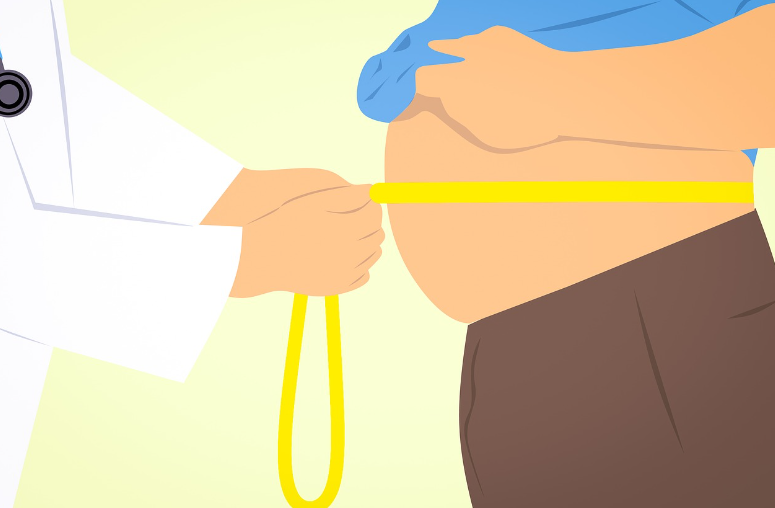Ozempic to Zepbound – Health insurance grapples with weight loss drugs cost

Ozempic to Zepbound – Health insurance grapples with weight loss drugs cost | Insurance Business America
Life & Health
Ozempic to Zepbound – Health insurance grapples with weight loss drugs cost
Eli Lilly and Novo Nordisk drugs could trim down obesity, but ROI questions linger
Life & Health
By
David Saric and Jen Frost
The Ozempic weight loss popularity explosion has raised a dilemma for health insurance companies, government agencies, and other payer organizations, as they figure out how equitable it will be to satiate demand for cover for new weight loss drugs like Wegovy and Zepbound and dampen the obesity crisis without running themselves ragged.
Amid Ozempic and other new diabetes and weight loss drugs’ booming popularity, healthcare payers – including insurance carriers – remain uncertain of the return on investment (ROI) of new weight loss drugs.
While health insurers have started to offer cover for new weight loss drugs, insurance and healthcare professionals are typically looking to what was described by an actuarial expert as a cautious approach and it is believed that more research on potential fiscal and social benefits of widespread cover for drugs like Wegovy and Zepbound is needed.
What is seen as a prohibitive pricing given the scope of the obesity epidemic may make it untenable for many health insurance companies, other payers, and plan sponsors to continue to provide widespread coverage for the drugs outside of the most extreme cases and it will take time to understand what any return on investment (ROI) might look like even with the benefit of cutting down on obesity-related costs, according to Greg Warren, partner and consulting actuary with Axene Health Partners and a fellow at the Society of Actuaries.
“Plan sponsors are thinking, do I need to cover it, should I cover it, would it help avoid hospital costs downstream if we had less obesity?” Warren told Insurance Business, acknowledging that the answer to the final question could well be a yes.
However, he caveated: “But [they also need to know] what the return on investment is.”
From Ozempic to Zepbound: New weight loss medicines touted for promising results in tackling obesity
“New-generation” anti-obesity medications like Wegovy and Zepbound, which contain the same active ingredient as diabetes medicines Ozempic (semaglutide) and Mounjaro (tirzepatide) respectively, have led patients to achieve weight loss of 15% to more than 20% in clinical trials, the New England Journal of Medicine has reported.
The market for the new weight loss medications is there and business is booming, with the drugs having been touted by some as a solution to America’s obesity emergency and a way to cut down on care costs.

How big is America’s obesity crisis?
The United States has been facing an obesity crisis:
US adult obesity prevalence has been reported as 42% by the Centers for Disease Control and Prevention
The cost of the obesity epidemic in the US is vast, at nearly $173 billion in 2019, according to the CDC.
Adults with obesity on average see medical costs that were $1,861 higher than for people of a healthy weight, the CDC found
More research needed on ROI of new weight loss drugs, insurance and healthcare experts say
While there has been excitement around the weight loss drugs, the prognosis from some corners has not been entirely positive.
If 80% of Americans with obesity started to take Ozempic at its current cost, “it would bankrupt the health care system,” Dr Richard Kahn, former chief scientific and medical officer at the American Diabetes Association, has told the New York Times.
The Society of Actuaries has commissioned a research project in partnership with Axene to better understand the total cost of care impact and ROI of new GLP-1 drugs, Warren told Insurance Business.
How much do Mounjaro, Ozempic, Wegovy, and Zepbound cost?
Mounjaro, Ozempic, Wegovy, and Zepbound all have different list prices, with ultimate cost to the patient influenced by multiple factors:
Eli Lilly’s diabetes type-2 drug, once-weekly injection Mounjaro, has been said to have a list price of $1,069 per fill
Eli Lilly’s weight loss drug, weekly injection Zepbound, has been said to have a list price of $1,059.87. With insurance, commercially insured people may be able to pay “as low as” $25 for a 1-month or 3-month prescription, according to Eli Lilly.
The list price for Novo Nordisk’s type-2 diabetes drug, injection Ozempic, has been reported as $1,349 by KFF
The list price for Novo Nordisk’s weight loss drug, injection Wegovy, has been reported as $936 by KFF
What is the difference between Ozempic and Wegovy?
Ozempic and Wegovy are brands manufactured by Danish pharmaceutical business Novo Nordisk:
Ozempic was FDA approved as a type-2 diabetes treatment in 2017, while Wegovy was FDA approved for weight loss treatment in 2021 when it became the first drug approved for chronic weight management in adults with obesity since 2014
Both Ozempic and Wegovy contain active ingredient semaglitude, but at different doses
Both Ozempic and Wegovy are administered by injection.
What is the difference between Mounjaro and Zepbound?
Mounjaro and Zepbound are brands manufactured by US pharma giant Eli Lilly:
Mounjaro was FDA-approved as a type-2 diabetes treatment in 2022, with obesity and weight loss treatment Zepbound having received FDA approval in late 2023
Both Mounjaro and Zepbound contain active ingredient tirzepatide
Both Mounjaro and Zepbound are administered by injection
Public interest in weight loss drugs, including Ozempic, Wegovy, and Mounjaro has surged
Nearly half of respondents to a 2023 KFF Health tracking poll said they would be interested in taking a safe and effective weight loss drug, though just 23% said they would be interested if it was administered via a routine injection, as is the case for FDA approved Wegovy and Zepbound.
Seven in 10 adults surveyed by KFF reported having heard at least “a little” about new weight loss drugs, which KFF said included Ozempic, Wegovy, and Mounjaro.
The ’TikTok effect’ – social media and celebrity gossip spurs Ozempic interest
The explosive extent of the popularity of drugs such as Mounjaro, Ozempic, Wegovy, and Zepbound has in part been driven by a viral social media spike.
“Within actuarial circles, pharmacy circles, pharmacists, clinical pharmacists, managed care circles, there’s even discussion now about, ‘what’s the TikTok effect, and how do we quantify that?’” Warren said.
In 2022, off-label use of blockbuster drug Ozempic spawned a #MyOzempicJourney TikTok trend, Variety reported. The #Ozempic hashtag has been viewed hundreds of millions of times, according to a New York Times report.
Showbiz gossip has fueled further interest, with some stars – reportedly including Khloe Kardashian – having clapped back at speculation they had used Ozempic or other GLP-1 drugs to lose weight.
Fasting + Ozempic/Wegovy + no tasty food near me
— Elon Musk (@elonmusk) November 16, 2022
“Of course, not all people eligible are going to get [the drugs] – and couldn’t and probably shouldn’t, so that brings up that question: what kind of inflammatory projections or illustrations are various folks putting out there [and] how does that affect people’s impressions?” Warren said.
“Lilly Stands Against the Use of its Medicines for Cosmetic Weight Loss: Mounjaro and Zepbound are indicated for the treatment of serious diseases; they are not approved for – and should not be used for – cosmetic weight loss,” Eli Lilly said in a January 4 open letter.
Mounjaro, Ozempic, Mygovy, and Zepbound – seeing double, the insurance cost question
As insurers and other stakeholders weigh up the ROI and insurance implications of new FDA approved weight loss drugs like Mygovy and Zepbound amid strong demand, they may also find their wants in conflict with those of pharmaceutical manufacturers.
The multi-use element of the drugs mean that different brands are FDA-approved for alternative purposes, but the weight loss drugs different prices to those approved for diabetes treatment. Eli Lilly’s Mounjaro and Zepbound are the same strengths, which is not the case for Novo Nordisk’s Ozempic and Wegovy.
“It’s the same drug and has a different price based on what it is prescribed for, which is quite new,” Warren said. “The payers, plan sponsors, employers, health plans, even government payers like Medicaid entities have to be thinking, ‘how do we get this for our weight loss patients at the lower price of the two? How do we get them all at the lower price of the two?’
“And of course, the pharma manufacturers are thinking, ‘how do I get the higher price for as many as possible?’ – and that’s not to vilify them, per se, they’re trying to make more profits they can reinvest into more cures and more treatments for society.”
New diabetes and weight loss drugs are not without controversy
And while the drugs have proved hotly popular, they have not been entirely without controversy.
Morgan & Morgan attorneys have claimed they are investigating 10,000 claims over the drugs. Eli Lilly and Novo Nordisk have labelled allegations “without merit”, Reuters reported.
What are GLP-1 drugs?
Glucagon-like peptide-1 (GLP-1) receptor agonists are medications that have boomed in popularity due to their potential to help with weight loss.
GLP-1 receptor agonists mimic the GLP-1 hormone, which is released in the gastrointestinal tract, according to the FDA.
Current FDA approved uses of GLP-1 receptor agonists include for weight loss, blood sugar reduction, and stroke and heart attack risk reduction in adults with diabetes type-2
Semaglutide (the active ingredient in Ozempic, Rybelsus, and Wegovy) is a GLP-1 receptor agonist
Tirzepatide (the active ingredient in Mounjaro and Zepbound) is a dual GLP-1 and glucose-dependent insulinotropic peptide (GIP) receptor agonist
The first GLP-1 receptor agonist diabetes treatment, exenatide, was FDA approved in 2005.
What is semaglutide?
Semaglutide is the active ingredient in Ozempic and Wegovy:
Semaglutide is the non-brand name for diabetes treatments injection Ozempic and pill-based Rybelsus, as well as weight loss drug Wegovy.
Semaglutide is a GLP-1 receptor agonist, which mimics the GLP-1 hormone released in the gastrointestinal tract
Danish company Novo Nordisk holds the patent for semaglutide
What is tirzepatide?
Tirzepatide is the active ingredient in Mounjaro and Zepbound:
Tirzepatide is the non-brand name for diabetes treatment injection Mounjaro and weight loss drug Zepbound
Tirzepatide is a GLP-1 and GIP receptor agonist
Tirepatide is found in Eli Lilly drugs.
Diet and exercise versus new weight loss drugs – experts at loggerheads
There are also competing views around whether diet and exercise, rather than drugs, is a better and healthier fix for the obesity crisis.
However, manufacturers and fitness experts have clashed over adherence rates to both weight loss drug and exercise regimes.
Actuaries like Warren are hoping for more research and collaboration to build an objective view on the best course of action to help treat obesity.
Insurance providers likely to remain cautious on Ozempic-like weight loss treatments
In the meantime, with drugs like Mounjaro, Ozempic, Wegovy, and Zepbound continuing to be highly sought after including off-label, Warren predicted that payers and plan providers will continue to require individuals identified as most in need to undergo sequential assessments to secure cover, starting with diet and exercise monitored under medical supervision.
“If that fails, in spite of appropriate effort, then you can move on to one of the lesser cost obesity drugs,” Warren said. “If you try that and then it fails to work with all the right effort involved, then you can move on to having the new drug — that’s how most people are thinking about it.”
Related Stories
Keep up with the latest news and events
Join our mailing list, it’s free!






